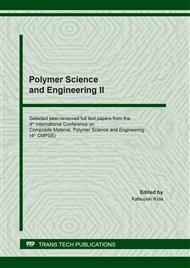p.3
p.9
p.15
p.23
p.29
p.37
p.43
p.49
Investigation of the Recyclability and Compostability of Biopolymers Contaminated by Petroleum-Based Polymers
Abstract:
Nowadays, we can choose a carrier bag made of traditional LDPE or a biodegradable polymer to pack vegetables, bakery products, and other products in more and more shops. However, the customers and the selective waste collection system are not yet prepared for the separate collection of compostable biopolymers. Therefore, they are mixed in the plastic waste stream. Therefore, the aim of the study was to analyze the mechanical and optical properties, and the compostability of different low-density polyethylene (LDPE) and poly (butylene adipate-co-terephthalate) (PBAT) compounds. We made different compounds from LDPE and PBAT by twin-screw extrusion and blown films from the regranulates. We investigated the tensile and optical properties and the biodegradability of the blown films. The tensile test showed that the "contaminants" had a more significant effect on elongation at break than tensile strength. We observed that the haze of the LDPE-based blends increased with an increasing weight fraction of PBAT. We found that PBAT-based samples were completely disintegrated in 42 days, regardless of the weight fraction of LDPE.
Info:
Periodical:
Pages:
23-28
Citation:
Online since:
June 2021
Authors:
Keywords:
Price:
Сopyright:
© 2021 Trans Tech Publications Ltd. All Rights Reserved
Share:
Citation:


